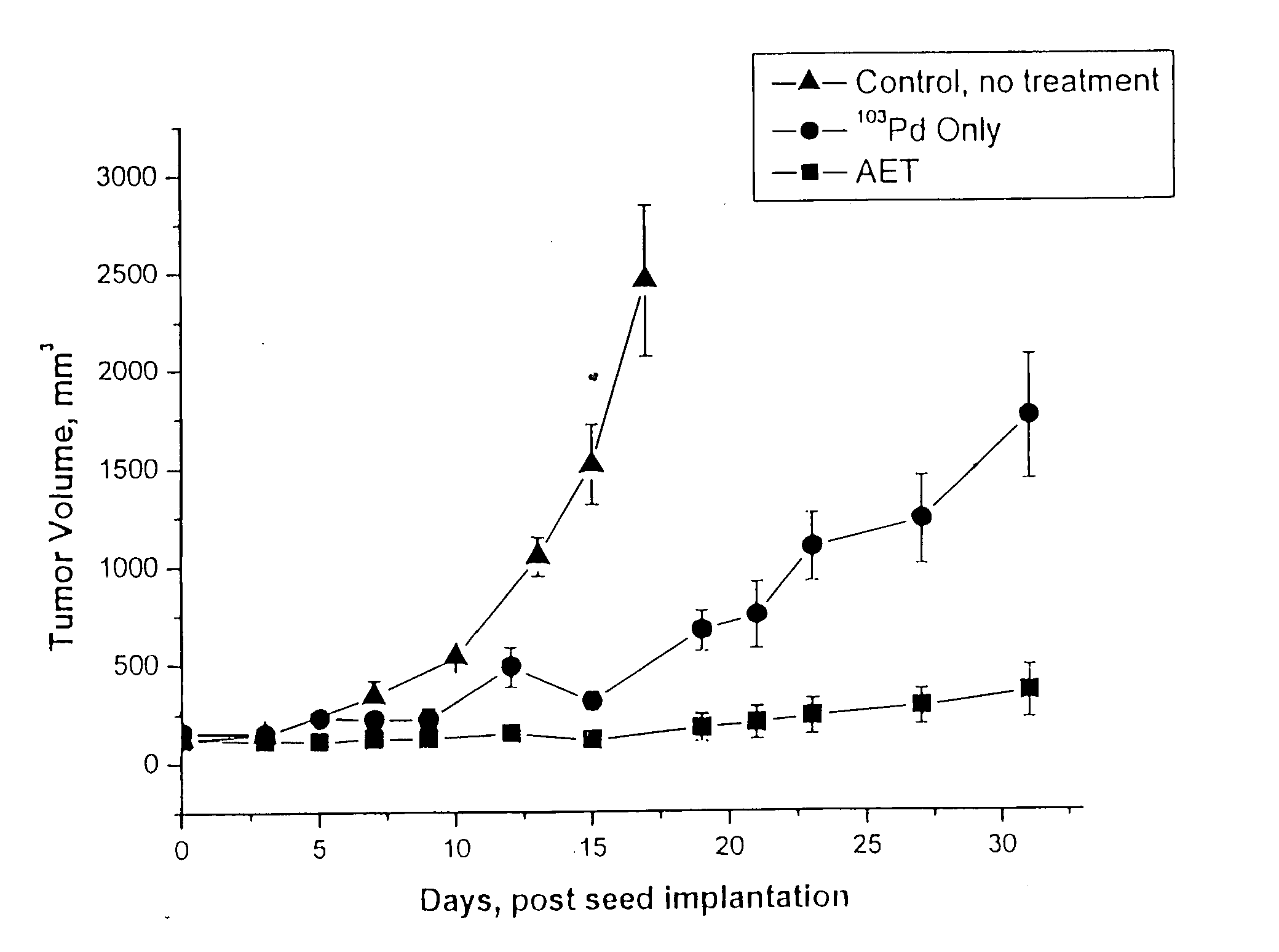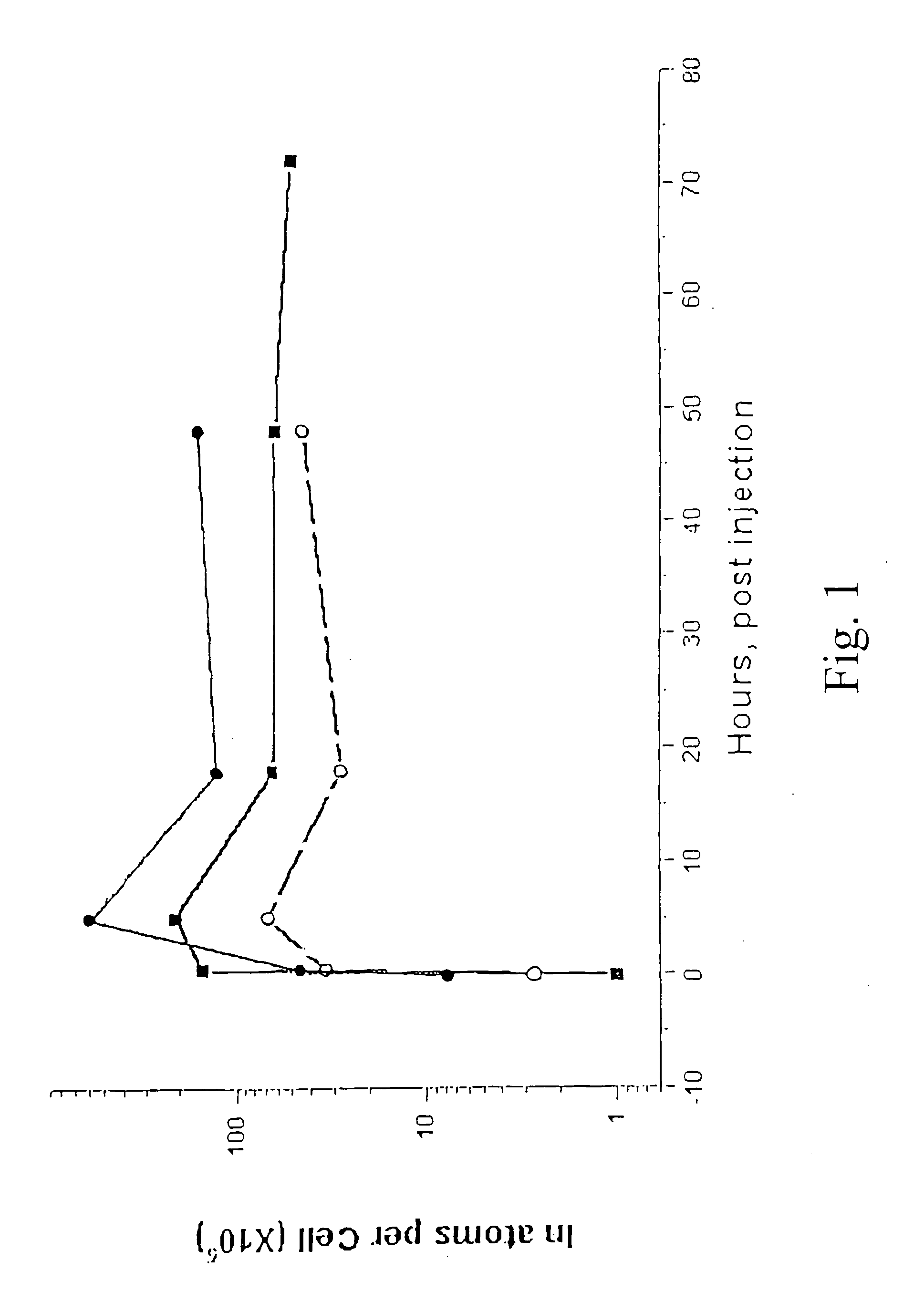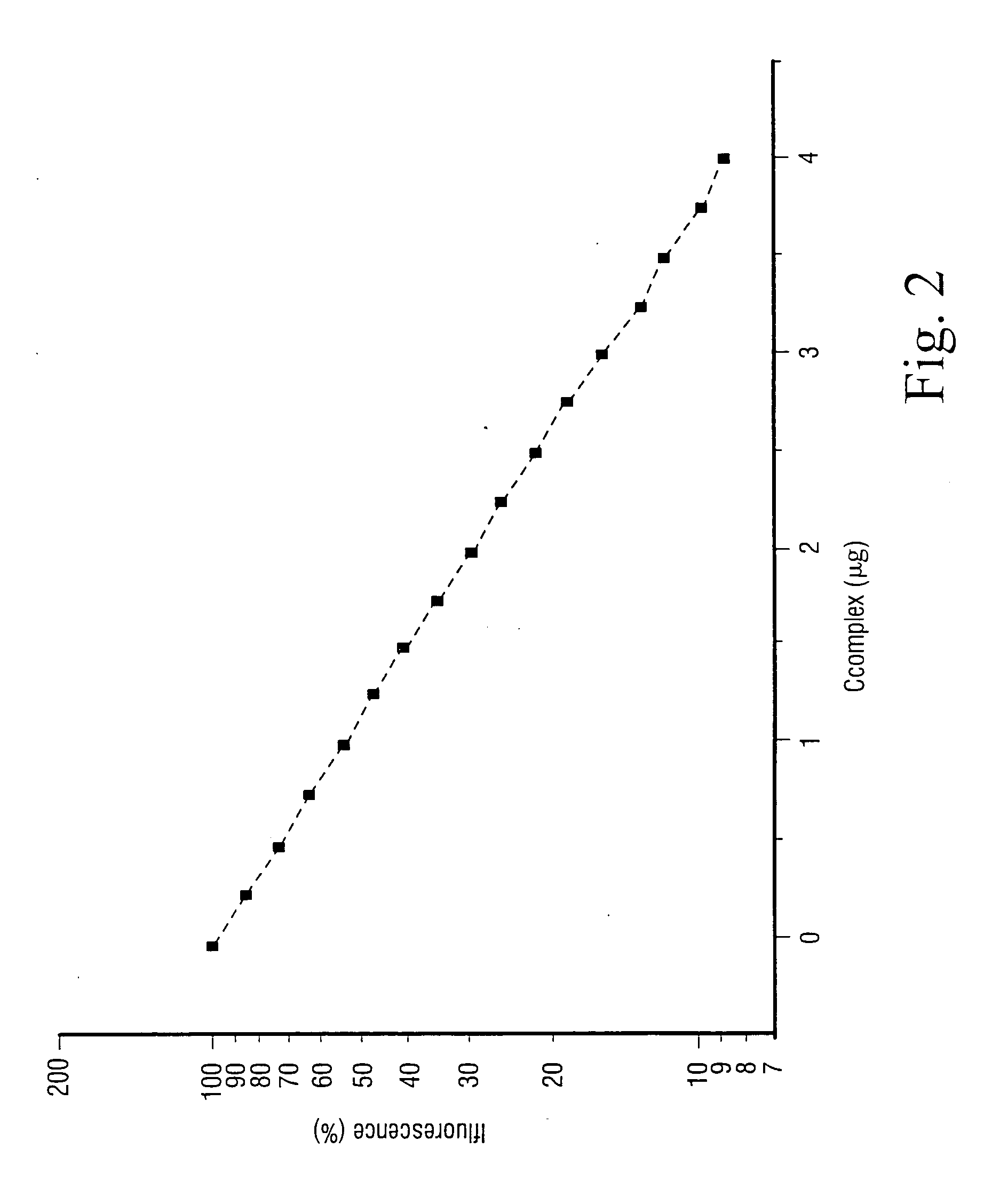Auger effect-based cancer therapy method
a radiation therapy and auger effect technology, applied in the field of radiation therapy, can solve the problem of severe and achieve the effect of increasing the damage to the dna
- Summary
- Abstract
- Description
- Claims
- Application Information
AI Technical Summary
Benefits of technology
Problems solved by technology
Method used
Image
Examples
preparation 1
Preparation of a Radiation Source
[0102] Radioactive isotope: 170Tm,
[0103] Casing: titanium tube
[0104] A sheet of 169Tm having a thickness of 0.2 mm was cut to give tiny, box-like pieces of the following dimensions: 4.5 mm×0.5 mm×0.2 mm. The 169Tm pieces obtained were inserted into titanium tubes (0.8 mm o.d., 0.7 mm i.d. and 5 mm long, commercially available from Uniform Tubes Inc., 1315 Brunswick Avenue, South Plainfield, N.J. 07080, USA). The total weight of the isotope inserted into the tube was 4.5 mg. Following sealing, the radiation source is activated by means of a neutron flux to convert 169Tm into 170Tm. The energy spectrum of 170Tm is shown in FIG. 3.
preparation 2
Preparation of a Radiation Source
[0105] Radioactive isotope: a mixture of 125I and 127I.
[0106] Casing: titanium canister
[0107] A mixture containing 127I (7 mg, 3.26×1019 atoms) and 125I (60 ng, 2.8×1014 atoms) was poured into a titanium tube having an inner volume of 1.4×10−3 cm3 (0.8 mm o.d., 0.7 mm i.d. and 5 mm long).
example i
Preferential Localization of the In3+-tetra(N-methyl-4-pyridyl)-porphyrin) complex within the Nucleus
[0108] The following experiment provides a test for selecting particularly useful complexes in accordance with the present invention. The test is based on measuring the number of metal ions that are brought into the malignant cells following the administration of the complexes of the present invention. Particularly useful complexes are defined as those complexes that are capable of bringing more than 105 metal ions into each cell nucleus, and more preferably more than 107 ions into each cell nucleus.
[0109] [In3+-tetra(N-methyl-4-pyridyl)-porphyrin)] was injected intra-pertioneally into C57 BL mice bearing B16 melanoma on the flank, at a dosage of 40 mg / kg body weight. Tissue samples were taken up to 72 hours after the injection. The samples were treated with trichloroacetic acid (TCA), such that the TCA-insoluble fraction contained the DNA and high molecular weight proteins, and th...
PUM
| Property | Measurement | Unit |
|---|---|---|
| atomic number | aaaaa | aaaaa |
| atomic number | aaaaa | aaaaa |
| distance | aaaaa | aaaaa |
Abstract
Description
Claims
Application Information
 Login to View More
Login to View More - R&D
- Intellectual Property
- Life Sciences
- Materials
- Tech Scout
- Unparalleled Data Quality
- Higher Quality Content
- 60% Fewer Hallucinations
Browse by: Latest US Patents, China's latest patents, Technical Efficacy Thesaurus, Application Domain, Technology Topic, Popular Technical Reports.
© 2025 PatSnap. All rights reserved.Legal|Privacy policy|Modern Slavery Act Transparency Statement|Sitemap|About US| Contact US: help@patsnap.com



